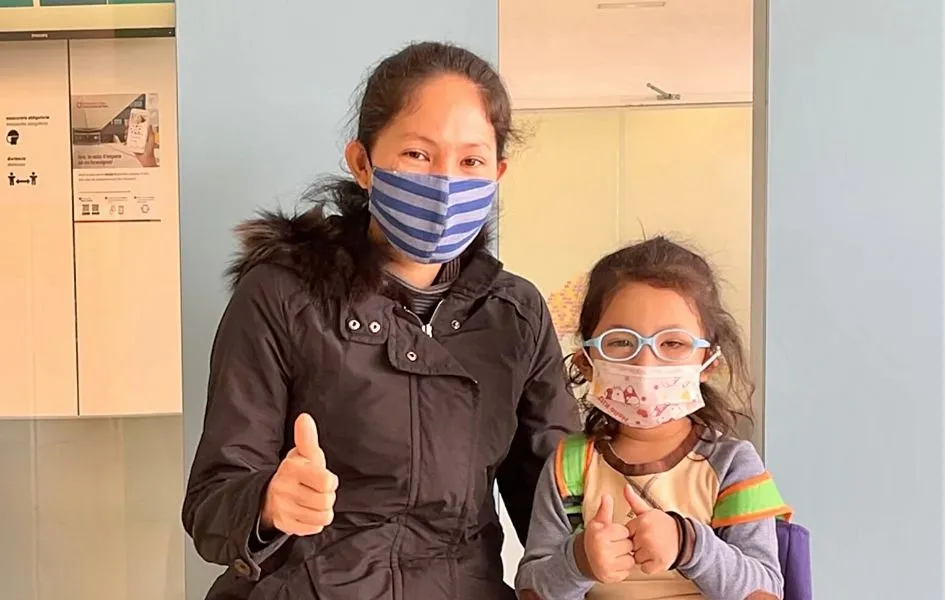"It is incredible that my daughter has kept her sight, in our country they told me that it was impossible"

Munineath and her mother, Savoueung, have travelled more than 10,000 kilometres–the distance between her native country of Cambodia and Barcelona –seeking a treatment to allow the little girl's sight to be preserved. "But it was worth it. It seems incredible that my daughter can still see, because in our country they had told us that it was impossible," says Savoueung.
It was this mother's insistence that prompted the doctors in her country to look for an alternative to enucleation of the only eye that the girl still had. She had lost her left eye a year and a half earlier.
Munineath, now 3 years old, was diagnosed with bilateral retinoblastoma or retinal cancer at the age of just four and a half months. "I noticed that her eyes were watering a lot and I took her to the doctor," recalls her mother.
The medical team that treated the little girl in her country, Cambodia, prescribed systemic chemotherapy. But the treatment did not give the expected response and was unable to stop the disease. A year and a half later, the tumour was so advanced that doctors had to enucleate her left eye.
The little girl continued with the treatment. But the disease did not subside and now it was endangering her right eye as well. "When the doctors told me they would have to remove it as well, I refused. I insisted over and over again that it couldn't happen because my daughter would be left totally blind. I insisted so much that they began to look for other alternatives around the world and that was how one day they told me that the SJD Barcelona Children’s Hospital were offering an innovative treatment. And, without a moment's hesitation we came here."
The Childhood Intraocular Tumours Unit medical team, which includes professionals from the Ophthalmology Department and the Oncology Unit at the Hospital, who treated Munineath, administered an intra-arterial chemotherapy session and five injections of intravitreal chemotherapy. The SJD Barcelona Children's Hospital has extensive experience in these treatments. It was the first centre in Europe to make use of intra-arterial chemotherapy in 2008 and one of the first centres to start administering intravitreal chemotherapy in 2012.
These treatments are more effective than conventional or systemic chemotherapy because they allow the medication to be administered directly into the patient's eye. In the case of intra-arterial chemotherapy, via a catheter that is inserted through the femoral artery and leads to the ophthalmic artery, and in the case of intravitreal chemotherapy, via an injection directly into the eye. "With lower doses of chemotherapy we achieve better results and reduce the adverse effects of the treatment", explains Jaume Català, an ophthalmologist specialising in retinal cancer. In the case of Munineath, these treatments have made it possible to deactivate the tumour.
"Travelling to a country so far away with a culture so different to ours made us a little fearful. I was especially worried about not being able to communicate with the doctors to give them all the information they asked for or to answer their questions or understand what they were saying but, although it is not easy, I have been able to do it without any issues thanks to the interpreter that the Hospital has provided", explains Munineath's mother.
The little girl runs non-stop around her. "Before the treatment, she could hardly see and was afraid to walk. Now she feels more confident, and she plays and runs about. Seeing her like this is a priceless gift," she concludes with satisfaction.




